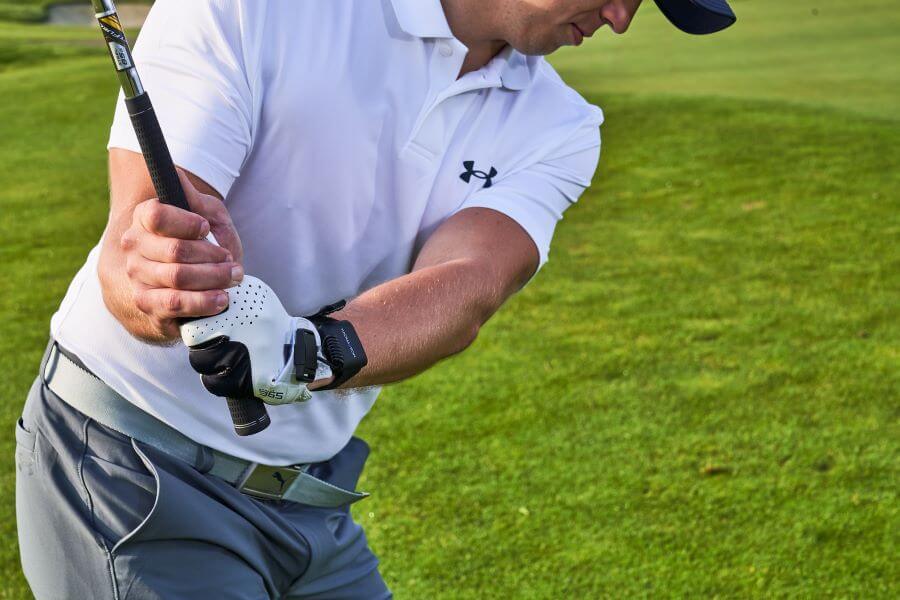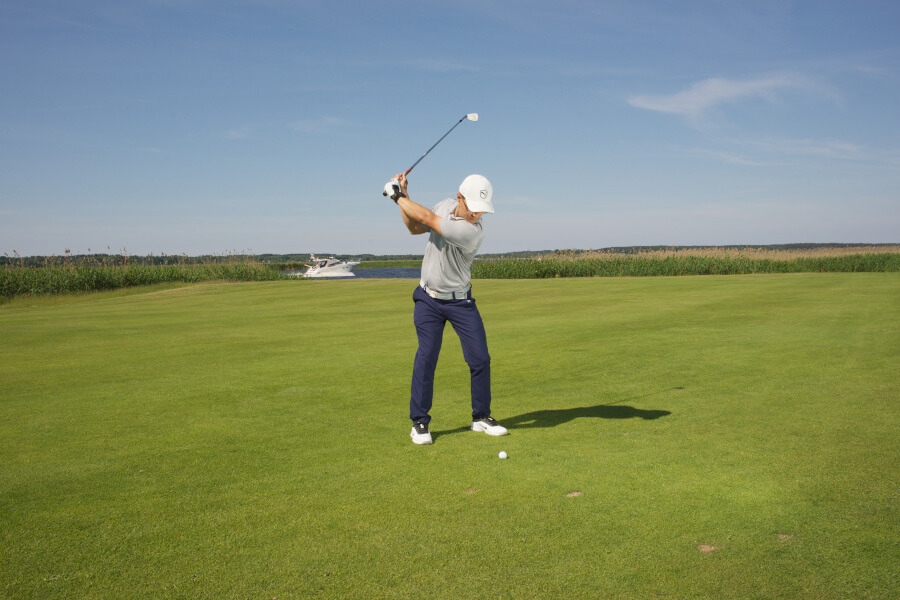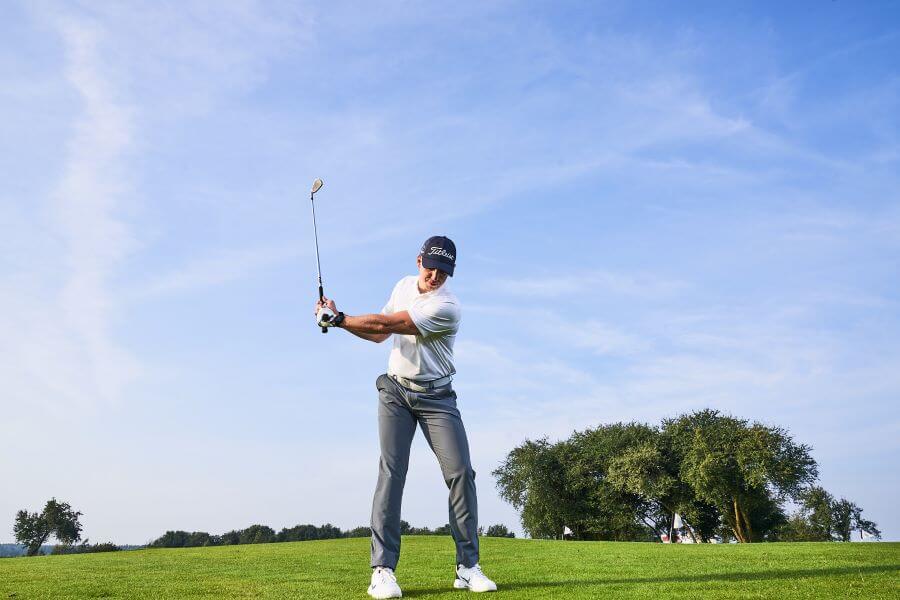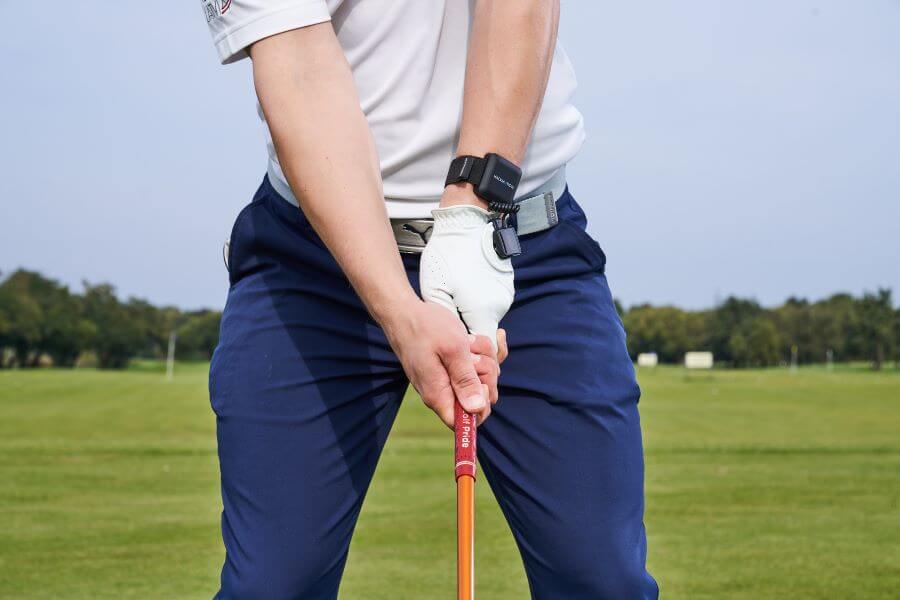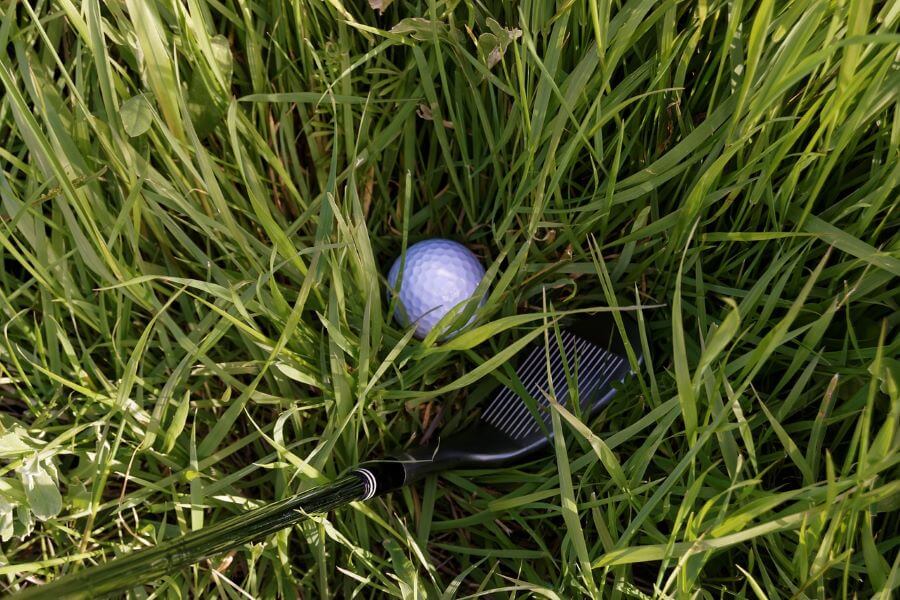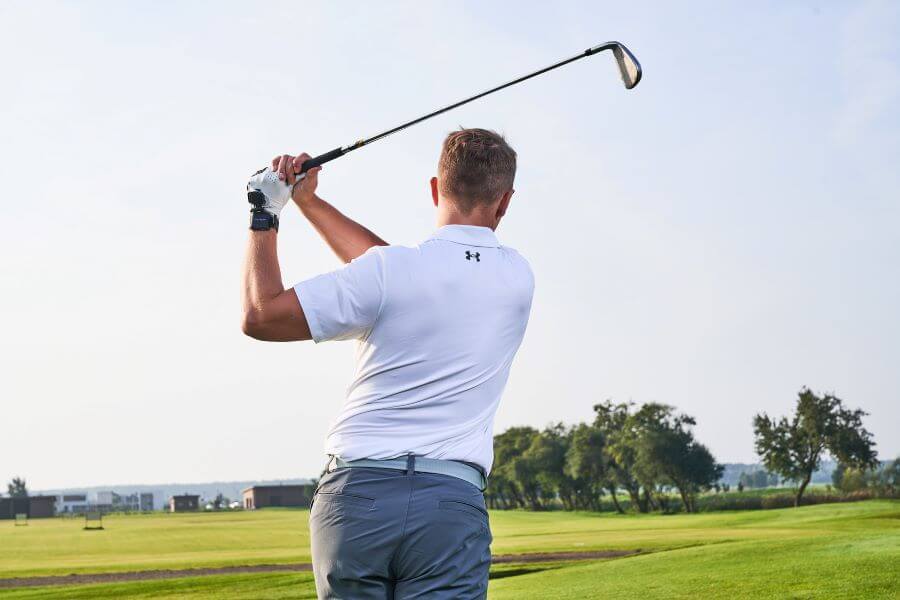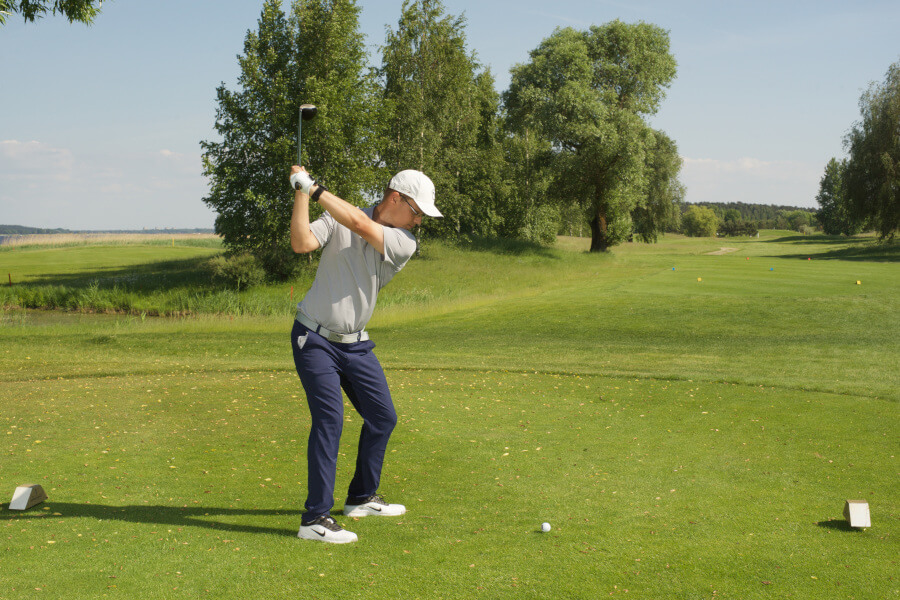What are Pros & Cons of a Flat Golf Swing? (Answered!)
I know golfers are always looking for tips to help them play better. And let’s face it, I am looking for those tidbits myself too!
One question often asked is what are the pros and cons of a flat golf swing?
I will look at this topic today and help you completely understand all the pros and cons of a flat golf swing, including:
- How a flat swing could help you create more speed. (Pro)
- How a flat swing could prove difficult in squaring the clubface up at impact. (Con)
But first…
Contents
What is Meant by the Term “Flat Golf Swing”?
A flat golf swing is one that is more horizontal, or “under” the plane, in relation to a standard swing plane.
Swing plane is the path your club travels as you:
- Swing back from address to the top of your backswing.
- Swing down from the top of your backswing and through the ball.
- Swing through post impact and on through to your finish.
More technically speaking, Trackman defines Swing Plane as:
Swing plane is the vertical angle between the ground and the circle that the club head travels on during the bottom portion of the swing arc.
The image on below shows a golfer at set up. I added the yellow lines to help indicate where their swing plane would be based on their set up.
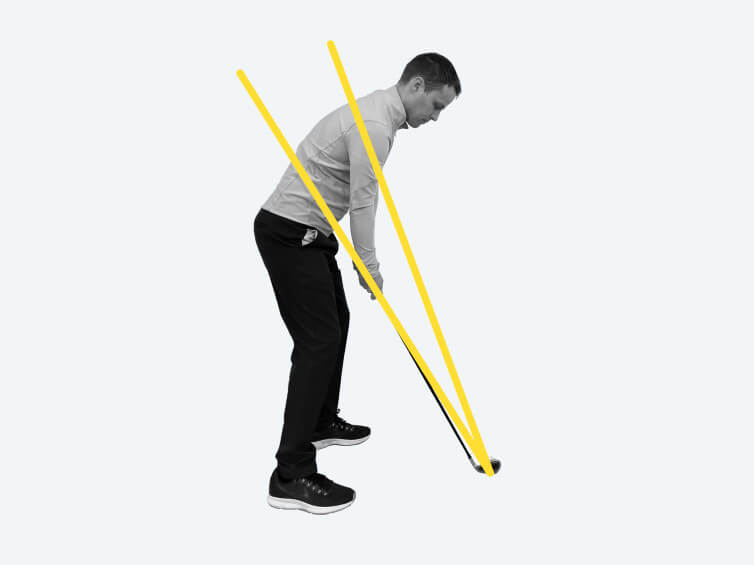
A swing where the club:
- Goes back to the top from address near the center of the yellow lines.
- Comes down through to impact falling within those yellow lines.
Would be considered “on plane.”
A swing where the club:
- Goes back to the top from address near the bottom yellow line, or under.
- Comes down through to impact falling near the bottom yellow line or under.
Would be considered “flat.”
Pros and Cons of a Flat Golf Swing
PROS
- More natural feeling.
- Can create more speed.
- Should be able to produce more distance.
- Easier to maintain swing plane.
- Can help produce a draw.
CONS
- Can be difficult to square club at impact.
- Can cause inconsistency in shots.
- A flat backswing could cause over the top downswing.
- Makes shots from rough difficult.
- Can cause the dreaded shank.
The Pros of a Flat Swing
A More Natural Feeling to Produce
Swinging flatter is more of a natural feeling for golfers to produce.
This is especially true for newer golfers, once you get them to understand that a golf swing is a rotational motion.
Initially, newer golfers tend to use too little body and simply pick the club up.
After introducing the idea that the body must rotate in order to produce power into the swing, golfers tend to feel comfortable with the concept.
This then becomes more of a natural feeling at that point.
However, as a coach and instructor, I find the problem then becomes the swing gets too flat.
At that point, I need to reverse course just a bit.
Can Create More Speed
One advantage of a flatter swing is the ability for a golfer to create more speed.
The flatter and more inclined the plane of the shaft is as it comes down from the top and into the ball, the more distance the clubhead travels.
This can equate to the ability to create more speed, or whip, as you move into the ball at impact.
In order for this to happen the way that it needs to, and in order for the clubface to square up to the ball at impact, the body must continue to rotate.
That is where the problem lies.
I see golfers struggle very often to keep the body rotating as it needs to in order to take advantage of this.
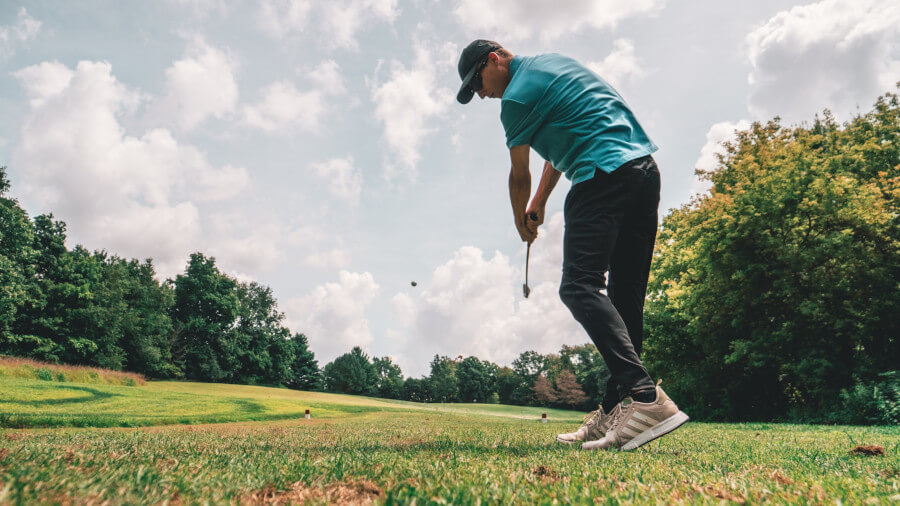
Should be Able to Produce More Distance
As mentioned above, a flatter swing has the ability to create more speed. More speed can mean more distance.
The big part of this equation is being able to get the clubface squared up at impact.
Without that, you will sacrifice accuracy and, in the process, lose distance.
Easier to Maintain Swing Plane
Because a flat backswing is easier and more natural to produce for most, in theory, it should be easier to repeat the path on the downswing.
As long as a golfer is able to maintain their posture on the downswing, and continue to rotate the body, maintaining the swing plane is easy to repeat.
The problem I see often lies in a golfer’s ability to stay in their posture on the downswing and especially at impact.
It is extremely common to see a golfer early extend, or stand up, as they move into impact.
This will cause the club path to get steep.
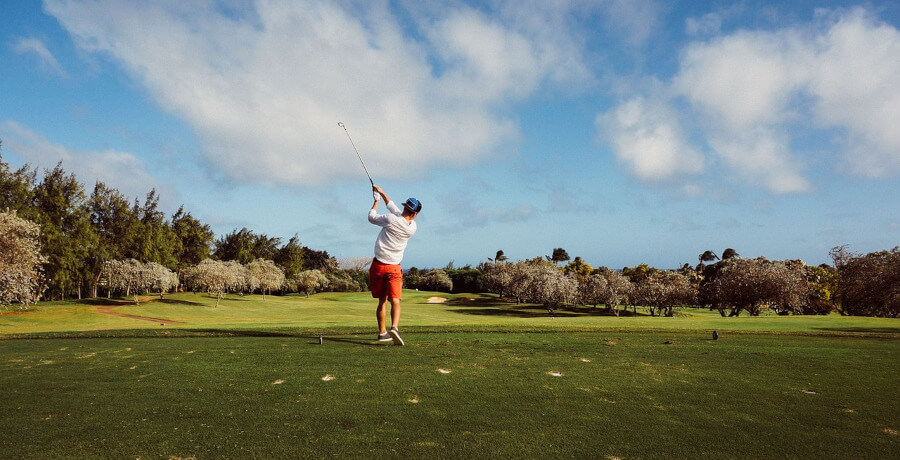
Can Help Produce a Draw
For many amateur golfers, a draw, or a right to left shot for a right hander, is very desirable.
This type of shot often means more distance.
And as we all know, distance is an important thing to most golfers.
A flatter swing means you are going to be coming more from the inside on the downswing.
Delivering the club into the ball from the inside is a critical component of being able to draw the ball.
The Cons of a Flat Swing
Can be Difficult to Square the Club at Impact
One of the biggest problems I see with a flatter swing, especially on the downswing, is not being able to square the club up at impact.
This happens for a few reasons.
Golfers who are flatter on the downswing need to be able to stay in their posture and continue to rotate through impact.
This often proves difficult for many golfers to do.
Early extension is where the hips move towards the ball during impact.
This is basically caused by a golfer losing their spine angle and not continuing to rotate through impact and on to the finish.
I actually teach many of my golfers to swing back more vertically on the backswing. I find that this allows them to get a little shallower on the downswing, and maintain that, as they move through impact.
One great piece of technology that can help you develop better face control is the HackMotion swing analyzer.
Can Cause Inconsistency in Shots
As noted above, it is necessary for those that swing flatter to be able to keep rotating and stay in their posture through impact.
This is a difficult thing to do for many.
Because of this, not only is it hard to deliver the club squarely into the ball, but it is also hard to avoid thin and heavy shots from creeping up.
This is thanks to the dreaded early extension.
A Flat Backswing Can Cause an Over-The-Top Downswing
As explained in my first two bullet points, a flat backswing needs to be maintained on the downswing in order to prove effective.
Again, the problem I often see is a golfer’s inability to stay in their posture and rotating through impact.
Losing the spine angle, and early extending, leads to a steeper, or over-the-top downswing.
Makes Shots From the Rough Difficult
One of the most important keys to being able to escape deep rough is being able to deliver the club a little steeper into the ball at impact.
You want to try to limit the amount of grass that gets between the clubface and the ball at impact.
Golfers that swing flatter will struggle with this.
Can Cause the Dreaded Shank
One of the leading causes of a shank is a golf swing that has gotten too flat on the downswing.
Delivering the club from the inside on the downswing is something you want to do in the golf swing.
You need to be careful however of not getting the club stuck behind you.
As mentioned throughout the cons section, there are two problems flatter swingers face.
First is being able to stay in their posture and second is being able to rotate the body through impact.
Getting the club stuck behind the body on the downswing, combined with early extension, can lead to shanks.
Flat Golf Swings that Work
The following are some great examples of flat golf swings that work.
As you can see, all three of these examples, Matt Kuchar, Ben Hogan, and Rickie Fowler, all maintain their spine angles beautifully through impact.
They all also keep their body rotating throughout. Both are vital for flatter swingers of the club.
In Summary
If executed correctly, a flat golf swing can prove to be very effective.
It can offer many advantages, including increased speed and distance.
No doubt, these are always areas where golfers are looking to improve.
Over the years, the problems I have seen resulting from a swing that is too flat, or one not executed correctly throughout the swing, can make golf a very frustrating endeavor.
My advice to help you in exploring and incorporating these concepts is to get with your local PGA or LPGA teaching professional.
They can help you in deciding what may be best for you and your game.





